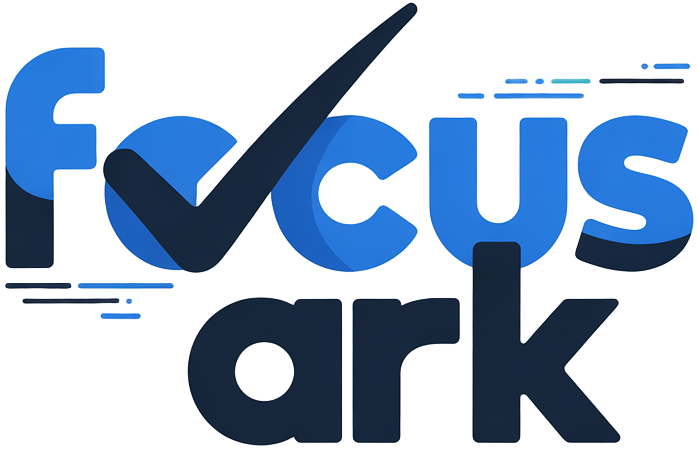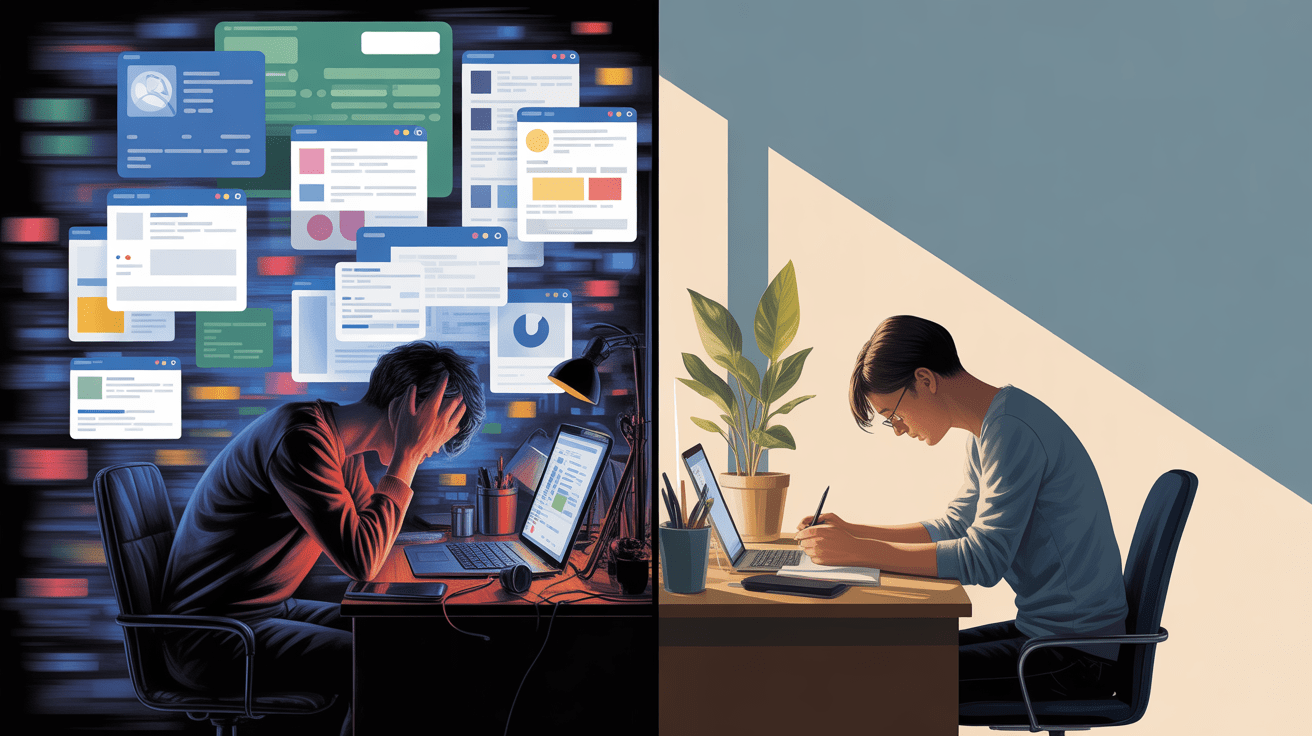It’s 10:47 AM. Emily’s got three browser tabs open for different projects, her phone’s lighting up with Slack messages, and she’s half-listening to a Zoom call while typing an email. She takes a sip of cold coffee (forgot about that too) and thinks, “This is fine. I’m being productive.”
Spoiler alert: She’s not.
If this sounds like your typical Tuesday, welcome to the club. We’ve all bought into this idea that juggling five things at once makes us workplace superheroes. But here’s what nobody’s telling you—it’s all BS.
I used to be the queen of multitasking. Seriously, I’d pride myself on answering emails during calls, updating spreadsheets while “listening” to podcasts, and somehow convincing myself I was crushing it. Then I started noticing things. Like how I’d read the same email three times and still not remember what it said. Or how I’d finish a day feeling absolutely fried but couldn’t point to one thing I’d actually accomplished.
Turns out, there’s a reason for that.
Your Brain on Multitasking (Spoiler: It’s Not Pretty)
Here’s the deal—when you think you’re multitasking, your brain’s basically playing an exhausting game of ping-pong. Scientists have been studying this stuff for years, and they’ve got some pretty wild findings.
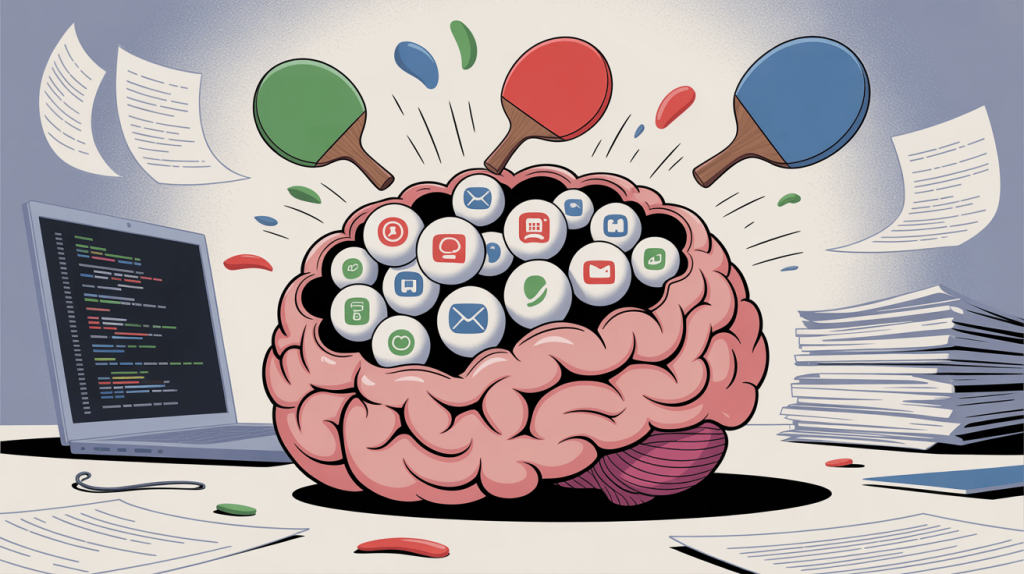
Remember those old computers that would freeze when you had too many programs running? That’s basically your brain. The American Psychological Association found that all this task-juggling can eat up 40% of your productivity. Forty percent! That’s like working a full day but only getting credit for half.
I know what you’re thinking. “But I’m different. I’m actually good at multitasking.” Yeah, I thought that too. Then I read about this Stanford study (Ophir, Nass, & Wagner, 2009) that basically destroyed my ego. They tested people who claimed to be multitasking pros, and guess what? Those folks actually performed worse than everyone else. They couldn’t filter out distractions, their memory was shot, and they were slower at pretty much everything.
The kicker? Our brains literally give us a little hit of dopamine every time we switch tasks. So we feel good about being scattered. It’s like our minds are playing a cruel joke on us—making us feel productive while we’re actually tanking our performance.
Daniel Levitin, this neuroscientist who’s way smarter than me, puts it perfectly: we’re basically creating a dopamine addiction loop. Check email, little hit. Answer Slack, another hit. Before you know it, you’re a productivity junkie who’s not actually producing anything meaningful (Levitin, 2015).
Working From Home: Where Focus Goes to Die
Let’s talk about remote work for a sec. Remember when we all thought working from home would be amazing? No commute, no annoying coworker heating up fish in the microwave, pants optional. The dream, right?
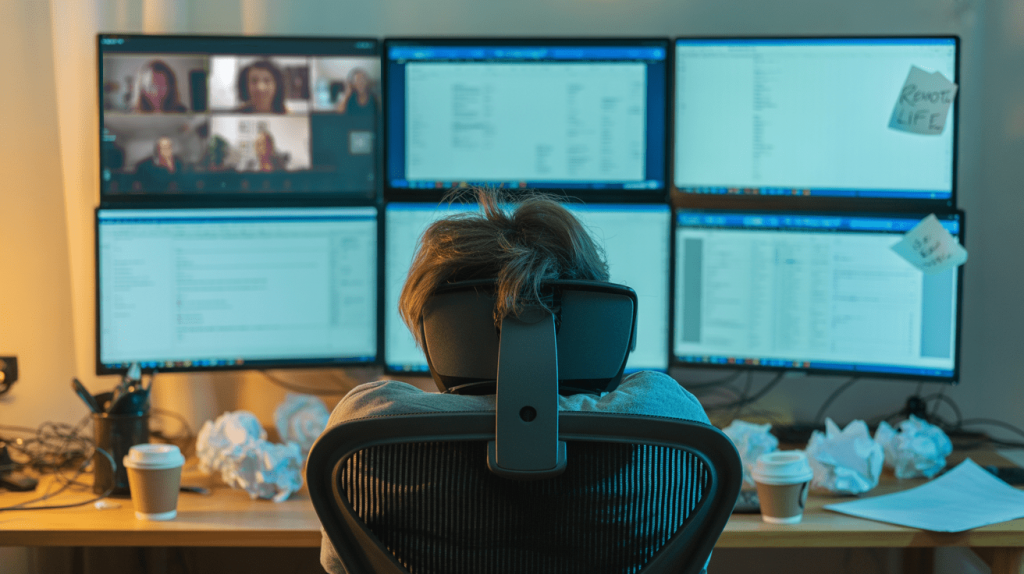
Well, nobody warned us that our homes would become multitasking pressure cookers.
Microsoft did this study that made me feel SO seen. They found that in long meetings (over 80 minutes), people were six times more likely to be doing other stuff. Six times! And honestly, that seems low to me. Who hasn’t sorted through their inbox during a “this could have been an email” meeting?
But here’s where it gets real. Harvard Business Review came out swinging, basically saying that when we multitask during video calls, we’re not just being less productive—we’re exhausting ourselves (Fosslien & West Duffy, 2020). Ever finish a day of back-to-back Zooms feeling like you ran a marathon? That’s your brain screaming for mercy.
The stats are brutal:
- 66% of us can’t focus properly at home (shocking, said no one ever)
- We spend 58% of our time on “work about work”—you know, the endless emails about the meeting about the project about the thing (Asana’s Anatomy of Work Index)
- 65% of remote workers stay late trying to finish what they couldn’t get done during the day
I’ll share something embarrassing. Last month, I was on a client call while responding to a “quick” Slack message. Missed the client asking a direct question, typed the wrong thing in Slack, and had to ask the client to repeat themselves. Smooth, right? That’s multitasking in action—making us look incompetent since forever.
This Is Your Brain on Constant Task-Switching
Okay, let’s get a little science-y (but not too science-y, I promise). Every time you switch between tasks, your brain has to do this whole song and dance:
- Stop thinking about Thing A
- Remember what Thing B even is
- Figure out where you left off with Thing B
- Try to care about Thing B again
And this happens in milliseconds, hundreds of times a day. No wonder we’re exhausted.
The University of California, Irvine, dropped this bomb: it takes 23 minutes to fully refocus after an interruption. Twenty. Three. Minutes. When was the last time you had 23 uninterrupted minutes? If you’re like me, it was probably in 2019.
There’s also this thing called “attention residue”—basically, part of your brain stays stuck on the last thing you were doing. So when you quick-check Instagram while writing a report, your brain’s still partly thinking about your friend’s vacation pics when you go back to work. It’s like having 47 browser tabs open in your mind.
The really scary part? This constant mental juggling act literally changes your brain. A UK study found that heavy multitaskers had less gray matter in the part of the brain that controls focus. Less. Gray. Matter. That’s not something you want to hear.
How to Actually Get Stuff Done (Without Losing Your Mind)
Alright, enough doom and gloom. Let’s talk solutions that actually work—and I mean really work, not just sound good in theory.
Time Blocking (Or: How I Learned to Stop Worrying and Love My Calendar)
This changed my life, and I’m not being dramatic. Instead of having a vague to-do list, you literally schedule when you’ll do each thing. Like, 9-11 AM is for writing, 11-11:30 is for emails, and so on.
The game-changer? You treat these blocks like actual meetings. You wouldn’t just skip a client call, so why skip your focus time? Marc Zao-Sanders talks about this, and honestly, it’s the only reason I get anything done anymore.
The Pomodoro Technique (But Make It Fun)
You’ve probably heard of this—work for 25 minutes, break for 5. But here’s my twist: I use a kitchen timer shaped like a tomato (yes, really) and I make it a game. Can I finish this section before the timer goes off? It’s weirdly motivating.
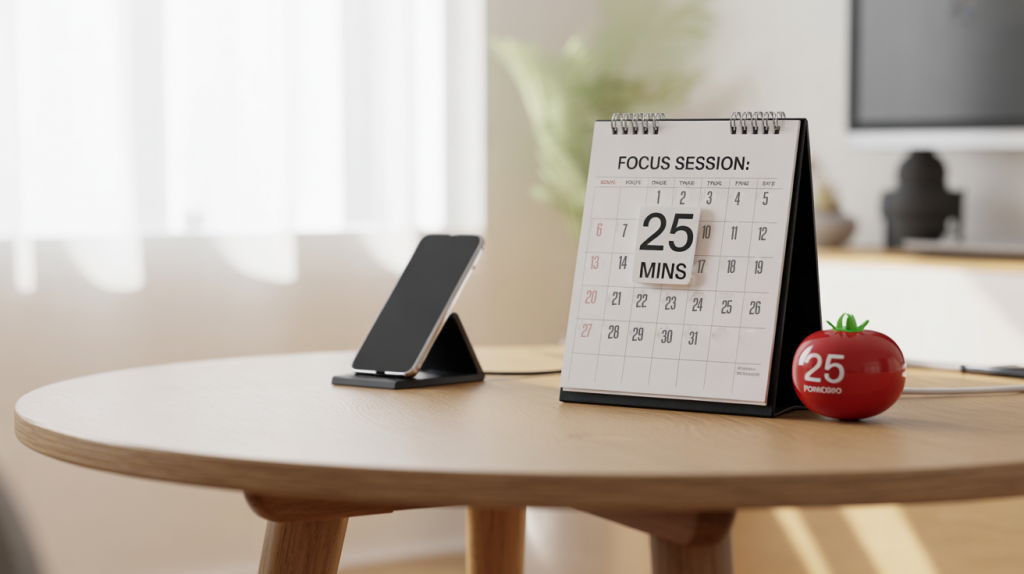
The key is being ruthless during those 25 minutes. No “quick” email checks, no “just one” Slack reply. The world won’t end if you don’t respond immediately. Trust me, I tested this theory extensively.
Going Nuclear on Notifications
This is gonna sound extreme, but hear me out. Turn. Everything. Off.
I mean it. Email notifications? Gone. Slack? Silenced. Phone? In another room, face down, possibly in a drawer.
Cal Newport, who wrote “Deep Work,” basically says we need to treat distractions like the enemy they are (Newport, 2016). At first, I thought this was insane. Now? I check email twice a day and my productivity has skyrocketed. My anxiety has plummeted. It’s beautiful.
The “What’s Actually Important” List
Every morning, I write down 3-5 things that actually matter. Not 20 things. Not “check email.” Real, meaty tasks that move the needle. Then I do the hardest one first, before my brain realizes what’s happening and starts making excuses.
Tech That Actually Helps (Instead of Making Things Worse)
Look, I’m not gonna pretend that willpower alone will save you. Sometimes you need tools to protect you from yourself.
For the “I Can’t Stop Checking Reddit” Crowd:
- Freedom: This app will block whatever sites destroy your focus. I may or may not have Facebook blocked from 9 AM to 5 PM every weekday.
- Cold Turkey: Even more hardcore. You can’t turn it off once it starts. Choose wisely.
For the “I Need Structure” People:
- Forest: You grow virtual trees by not touching your phone. Kill the tree by checking Twitter? You’re a monster. It’s surprisingly effective.
- Pomodoro timers: Even a simple web-based one works. Just google “tomato timer” (yes, really).
For the Data Nerds:
- RescueTime: This will show you exactly how much time you waste. Warning: the truth hurts.
- Toggl: Track what you’re actually doing vs. what you think you’re doing.
🎯 The Weird Productivity Hack That Actually Works
Okay, here’s my secret weapon—the “2-Minute Mental Reset.” Sounds woo-woo, but stick with me.
Between tasks, instead of immediately diving into the next thing, I do this:
- Stand up (crucial—your butt needs a break anyway)
- Look out a window, not at a screen
- Take 10 deep breaths (I know, I know, but it works)
- Say out loud: “I’m done with [whatever I just finished]”
- Picture myself nailing the next task
Why this works: You’re literally giving your brain permission to let go of the last task. The verbal part is key—it’s like closing apps on your mental phone. Plus, that tiny bit of movement gets your blood flowing again.
First time I tried this, I felt like an idiot talking to myself. Now? I’m convinced it’s why I don’t need that 3 PM coffee anymore. One of my colleagues started doing it and said it was like “rebooting her brain between tasks.” Exactly.
Setting Up Your Space So You Can Actually Focus
Your environment matters way more than you think. Here’s how I finally got my home office to stop sabotaging me:
The Basics:
- One designated work spot. Not your bed. Not your couch. A actual work zone.
- Clear desk = clear mind. I know it’s a cliche, but damn if it isn’t true.
- Phone goes in another room. Period. “But what if—” No. Another room.
The Game-Changers:
- Noise-canceling headphones. Even if you’re not playing music, wearing them signals “don’t bug me.”
- A timer you can see. Makes time tangible somehow.
- A “Do Not Disturb” sign for family/roommates. Mine says “Unless the house is on fire, it can wait.”
I learned the hard way that working from your couch seems cozy until you realize you’ve been “working” for three hours and mostly just pet your cat and checked Twitter.
Playing the Long Game
Here’s what nobody tells you about single-tasking—the benefits compound like crazy.
First few weeks? You’ll finish tasks faster and make fewer dumb mistakes. Nice, but not life-changing.
After a few months? That’s when the magic happens. You start producing work that’s actually good, not just done. You end your days knowing exactly what you accomplished. Sunday night dread? Starts fading because you’re not behind on everything.
I know someone who went from constantly missing deadlines to becoming the go-to person for complex projects—all because they started focusing on one thing at a time. Their manager literally asked what happened. “Did you take a course or something?” Nope, just stopped trying to be a human Swiss Army knife.
How to Know If This Is Actually Working
You can’t improve what you don’t measure, so here’s what to track:
- Deep work hours: How long can you focus without interruption? Start with 30 minutes. Work up from there.
- Tasks completed: Not started. Completed. Big difference.
- The 3 PM check: How’s your energy at 3 PM? If you’re not desperately seeking caffeine, you’re on the right track.
- The Sunday night test: How stressed are you about Monday? Less stress = winning.
When I started tracking this stuff, I realized I was getting more done by noon than I used to accomplish in a full day of frantic multitasking. Mind. Blown.
Let’s Kill Some Multitasking Myths
“But I’m good at multitasking!” No, you’re not. Neither am I. Neither is anyone. Studies show that people who think they’re multitasking ninjas are usually the worst at it. The University of Utah found that only 2.5% of people can actually multitask without performance dropping. Those are worse odds than Vegas.
“I have to multitask—there’s too much to do!” That’s like saying “I have to drive faster because I’m late.” You’ll either crash or get pulled over. Single-tasking isn’t about doing less—it’s about doing things properly the first time so you don’t have to redo them.
“Multitasking shows I’m a hard worker!” Does it though? Or does it show you can’t prioritize? The most successful people I know are ruthlessly focused. They’re not busy—they’re productive. There’s a massive difference.
The Bottom Line
Look, I get it. Changing how you work feels weird and uncomfortable. The first time I spent an entire hour on one task without checking anything else, I felt like I was breaking some unwritten rule.
But here’s the thing—in a world where everyone’s attention is scattered, the ability to focus is basically a superpower. While everyone else is spinning their wheels, you’ll be actually getting somewhere.
Start small. Pick one hour tomorrow morning. Turn off everything. Choose one important task. Do just that task. See how it feels.
I’m betting you’ll be shocked at how much you accomplish. And more importantly, how much better you feel.
Your work will improve. Your stress will drop. You might even remember what it feels like to think clearly again.
So what do you say? Ready to stop juggling and start achieving?
Additional Resources for Going Deeper
Want to really master the art of single-tasking? Here are some resources that changed my game:
Books & Guides:
- Getting Things Done by David Allen – The OG productivity system
- The ONE Thing by Gary Keller – All about focus and priorities
- Atomic Habits by James Clear – For building better work habits
Apps for Different Work Styles:
- Notion – If you want an all-in-one workspace
- Obsidian – For the note-taking nerds
- Brain.fm – Scientifically designed focus music
Research & Articles:
- Microsoft’s Work Trend Index – Latest remote work research
- MIT’s Guide to Deep Work – Academic but practical
References (APA Style)
American Psychological Association. (2006). Multitasking: Switching costs. Retrieved from https://www.apa.org/topics/research/multitasking
Fosslien, L., & West Duffy, M. (2020, April 29). How to combat Zoom fatigue. Harvard Business Review. Retrieved from https://hbr.org/2020/04/how-to-combat-zoom-fatigue
Levitin, D. J. (2015, January 18). Why the modern world is bad for your brain. The Guardian. Retrieved from https://www.theguardian.com/science/2015/jan/18/modern-world-bad-for-brain-daniel-j-levitin-organized-mind-information-overload
Madore, K. P., & Wagner, A. D. (2019). Multicosts of multitasking. Cerebrum, 2019(April), 04-19. Retrieved from https://pubmed.ncbi.nlm.nih.gov/32206165/
Newport, C. (2016). Deep Work: Rules for Focused Success in a Distracted World. New York, NY: Grand Central Publishing.
Ophir, E., Nass, C., & Wagner, A. D. (2009). Cognitive control in media multitaskers. Proceedings of the National Academy of Sciences, 106(37), 15583–15587.
Note: Additional research and statistics referenced in this article were drawn from the provided research document. As per best practices, readers are encouraged to verify current data and access original sources for the most up-to-date information.
